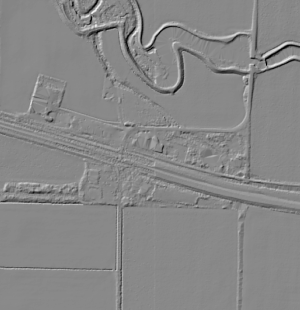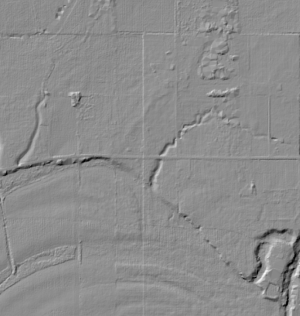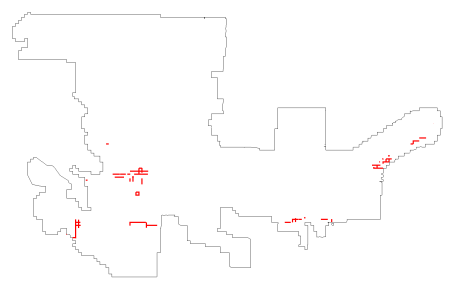
|
|
 |
 North-south vertical step at tile boundary, State Route 20 west of Burlington. Step is about 0.5 ft in fields to south of highway. Along highway, step is nearly 4 ft. Lumpy, too-low surface of western part of highway may reflect uncompensated range walk. |
 North-south vertical step at tile boundary, Skagit valley southeast of Sedro Woolley. Step is about 0.75 ft high at road in center of image. |
 Outline of survey area with observed tile-boundary steps in red. Zipped ESRI .e00 file of observed tile-boundary steps; zipped shape file of observed tile-boundary steps. Note that this inventory of tile-boundary steps is almost certainly incomplete. |
"Although 60 points where collected, the resulting LiDAR terrain in areas of 15 points proved unaccepted for proper statistical analysis in these areas resulting in the dismissal of these points."